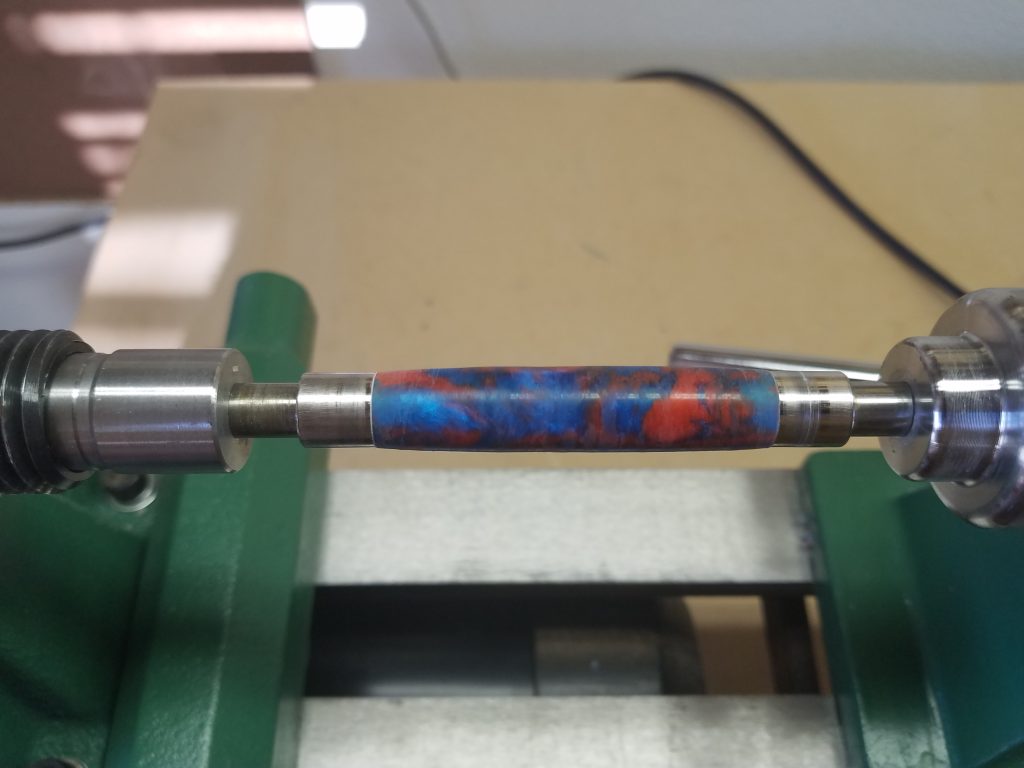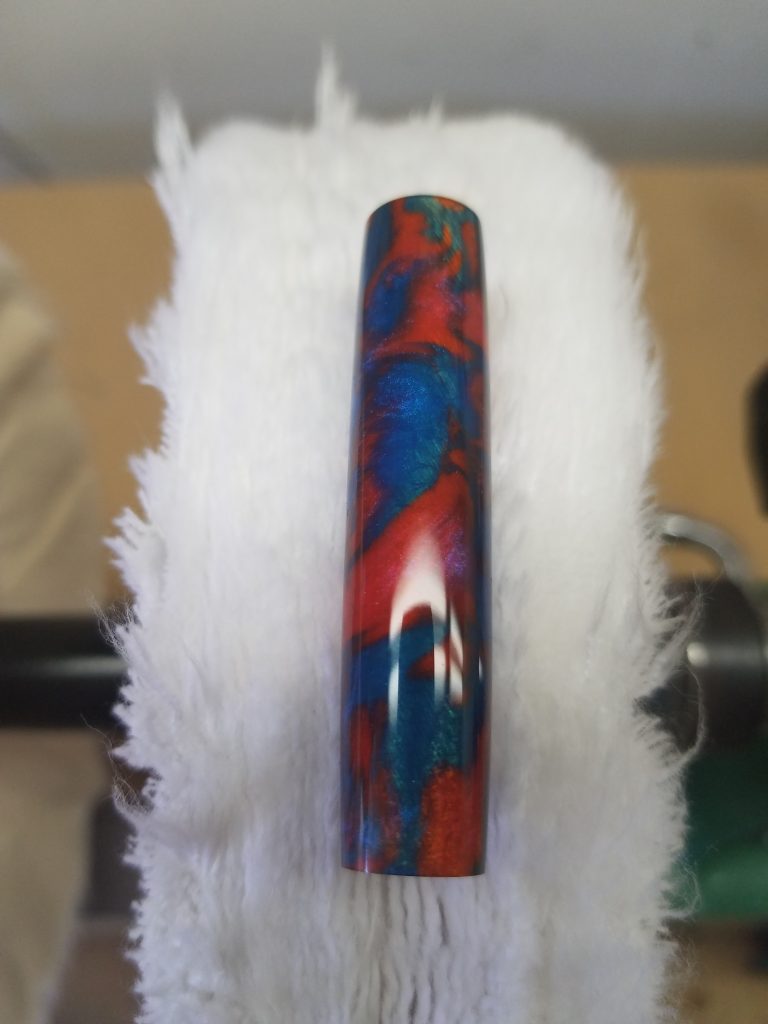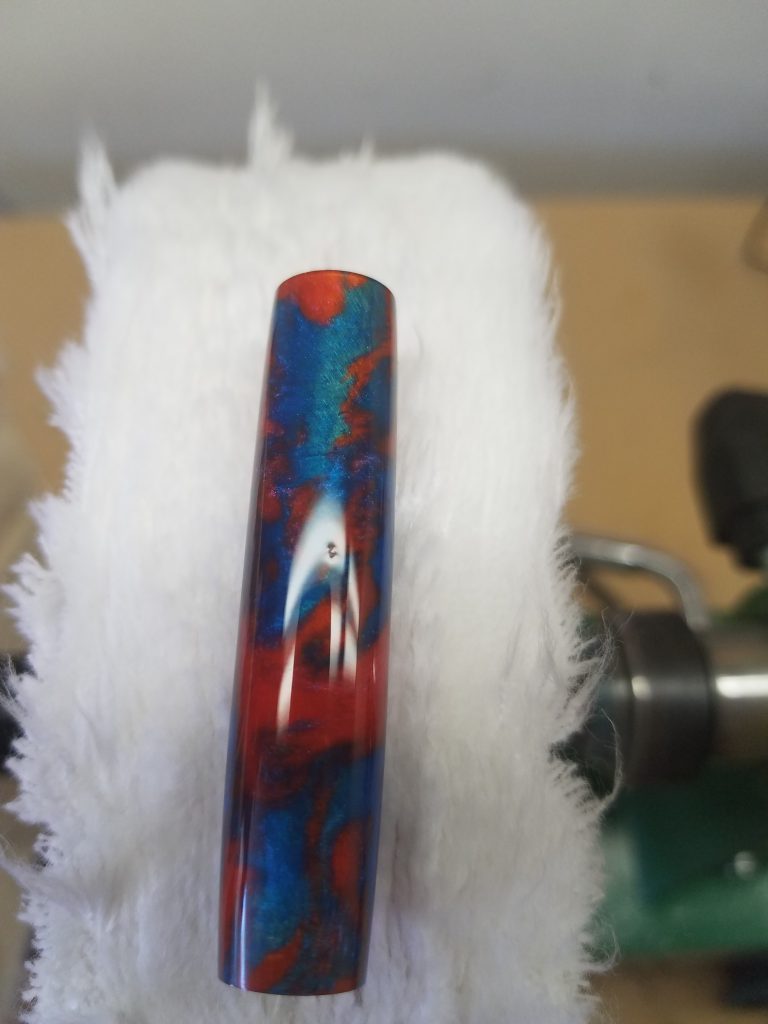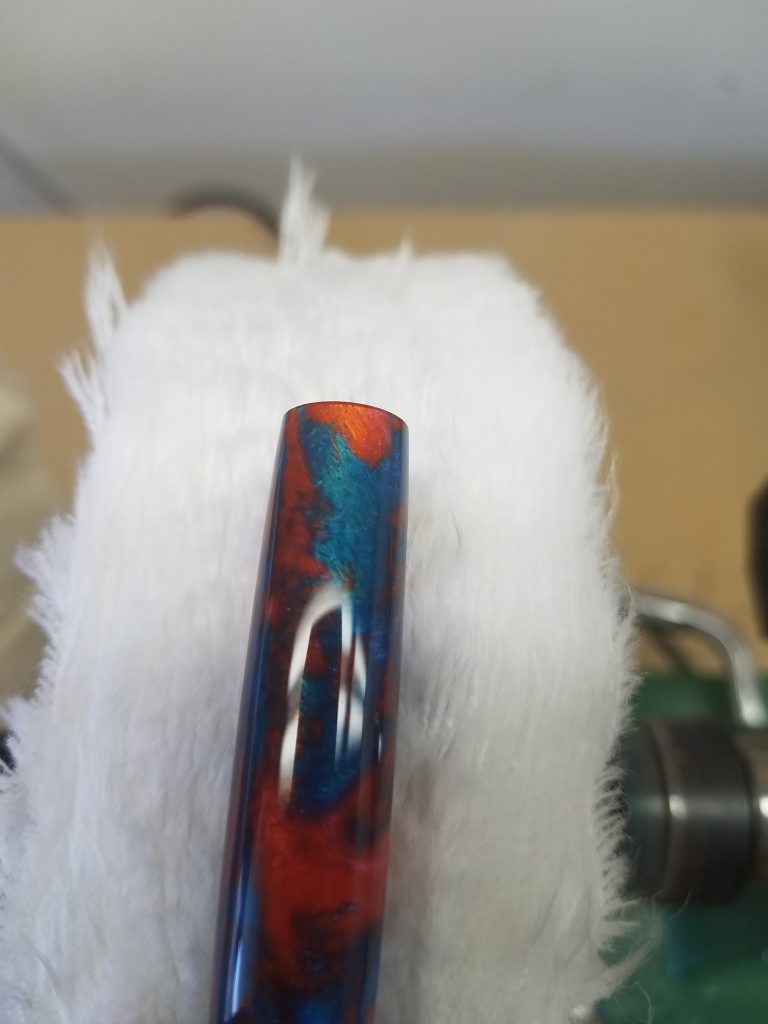Not every casting or turning is a success. From failure we learn. Today I turned the second half of a blank I cast for my father. It turned well and was on it’s way to becoming a beautiful magnetic Vertex rollerball pen. 
The blank sanded up nicely. I noticed that the pen would be translucent but the brass tube didn’t really detract from the overall look. Until I started to buff the blank.
During the buffing process I noticed a flaw in the blank. It’s the type of flaw that occurs when you don’t get the blank under pressure quickly enough. If you don’t apply sufficient pressure to crush the air bubbles before the resin starts to cure you can get these small voids in the blank, seen here in the light’s reflection. I spent some time trying to see if it was shallow enough to buff out, but it wasn’t. This flaw combined with the glue visible on the tube convinced me to abandon this effort.

Here you can clearly see the roughed up tube through the resin. It looks like it could be part of the casting in this picture but its not. It’s time to accept that painting the inside of the blank needs to be part of my standard process. This was a failure but it drove home a few ideas that I’ve hesitated to integrate into my process.
I will drop this blank in acetone and recover the tube. I’m going to acquire some Alumi-UV for these instances. It may be effective against small voids saving an otherwise salable product.
Lessons Learned
- If there’s any chance the blank may be translucent, paint the inside of the blank.
- Ensure the blank is under pressure before the resin thickens too much to flow into the voids as the air bubbles are crushed.
- Abort work as soon as it becomes obvious that a blank isn’t viable. Then determine if any remediation would be cost effective.